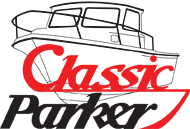Fishaddict
Well-known member
- Joined
- Oct 15, 2011
- Messages
- 279
- Reaction score
- 20
I know it has been discussed many times, but I could not find any good write up of gel coat redo of our Parkers. I have seen people using Interlux lpu paint. I spoke to Parker yesterday and they apparently use interior gelcoat with 9oz/Qt of Awgrip coarse non skid particles. Any experience of rolling this on with a paint roller? They told me the working time is about 40 minutes with 1% catalist. Do you need 2 people working at the same time from bow down? I have 18 ft boat and very handy guy. I want to give this route a shot. Am I crazy? Please, help. :roll:



























